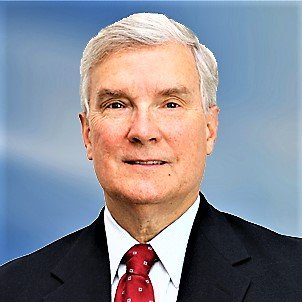A new regional fiber ring will bring faster internet to Hampton Roads
Speakers (from left to right):
Robert A. Crum Jr. is the executive director of the Hampton Roads Planning District Commission and the Hampton Roads Transportation Planning Organization. He joined those agencies as executive director in July 2015. He has over 38 years of professional community planning experience. From 2008 to 2015, Crum was the executive director of the Richmond Regional Planning District Commission (now called PlanRVA) and Transportation Planning Organization.
Steven DeBerry is the executive director of the Southside Network Authority, the entity responsible for creating a fully integrated regional fiber network. He has held that role since June 2020. He served as the chief information office for the City of Norfolk for nearly five years. For the 30 years before that, DeBerry held several senior civilian Navy leadership roles including those in financial management, supply chain management, facilities management, strategic planning, and information technology.
Robert A. Crum Jr. remembers chuckling about five or six years ago when an information technology person told him that the subsea cables that would be landing in Virginia Beach could pose an incredible opportunity for the Hampton Roads region.
“I was a community planner – not an IT guy – and this was not in my lane,” said Crum, the executive director of the Hampton Roads Planning District Commission and the Hampton Roads Transportation Planning Organization.
Yet some IT managers explained to Crum the possibilities and helped him understand how to turn those opportunities into a plan.
“How do we take advantage of these incredible internet speeds and really offload this ultrafast network into the Hampton Roads region to not only improve our quality of life but to create job opportunities, to provide a more cost effective and more reliable broadband service in our region, and use this as an economic driver,” Crum said.
The plan was to connect the subsea cables coming ashore in Virginia Beach – three cables are there now with more on the way – to a regional interconnected fiber network.
That idea is turning into reality.
Five Hampton Roads cities – Virginia Beach, Chesapeake, Portsmouth, Norfolk, and Suffolk – have joined forces to build a 119-mile fiber ring to bring ultrafast internet to those communities. Construction should start soon on installing the fiber ring, with the first phase of the project completed in early 2023.
Future phases include eventually connecting all 17 cities and counties including those localities on the Peninsula.
Crum spoke during the Virtual Innovation Spotlight on the new regional fiber network ring in Hampton Roads. The webinar, presented by RVA757 Connects, was held Tuesday Oct. 4.
Also speaking during the webinar was Steven DeBerry, the executive director of the Southside Network Authority, the entity responsible for creating the fully integrated regional fiber network.
“One thing that's really important is the guiding philosophy that our regional network ring is going to enable competition. We will not compete with ISPs (internet service providers) for service delivery,” Crum said.
“We don't view us as providing that last mile service. What we want to do is we're going to build the middle mile fiber and we're going to attract in as many internet service providers as possible, and then they will work to provide that last mile service to our homes, residents and businesses,” he said.
“Think of our fiber network as the national highway system,” Crum said. “We are building the information highway and we want the service providers to come in and ride our highway and provide this ultrafast fiber service into our region and into our communities, homes, businesses, educational institutions and governments.”
Since April, the project has held three groundbreaking ceremonies. The first was held at the cable landing station for the first phase of the ring to the five Hampton Roads cities.
Another groundbreaking took place in July for a $37 million project that will bring broadband to western Suffolk and to Isle of Wight and Southampton counties. The third groundbreaking took place in Chesapeake for a local fiber network that will tap into the regional ring.
In late September, an application was filed for a federal grant to help pay for the $45 million project to extend the fiber ring to the Peninsula.
“This is a generational project that we believe will build enough capacity to handle the needs for the next 40 years as we move forward,” DeBerry said.
DeBerry, who started as the Southside Network Authority’s first executive director in June 2020, said the authority considered looking at creating a private-public partnership as well as providing local funding to build the fiber ring.
But COVID changed the landscape. The localities used federal rescue act funds to provide budget opportunities to finance the $25 million needed for the regional ring, he said.
“We decided to go down the construction route where we would own the fiber ring because we thought that would provide more leverage,” DeBerry said.
Constructing the regional fiber ring with Southside Network Authority-member funding will allow the authority to enhance competition by taking away some barriers of construction costs that might preclude smaller internet service providers from being able to compete in the market, DeBerry said.
The fiber ring is creating a technology ecosystem, Crum said.
“Our goal is for the 757 to be known as being a smart region where we can use our technology to address our most significant challenges,” Crum said.
The ring, he said, provides opportunities to use the internet for autonomous vehicles, remote learning and teleworking, support for colleges and universities, and help to attract high-tech companies.”
“These are things that we think are a huge opportunity for us through this regional fiber network,” he said. “We really think we're going to be able to provide the type of fast, reliable fiber and broadband that can fully support new businesses and hopefully create a good environment and ecosystem for them to want to call the 757 home.”


